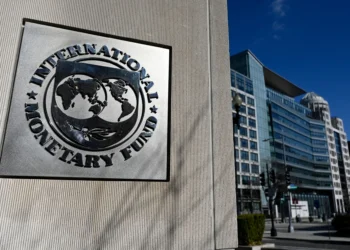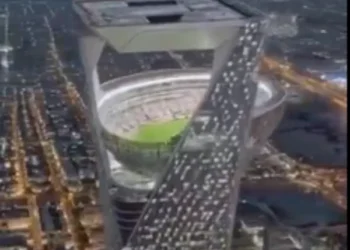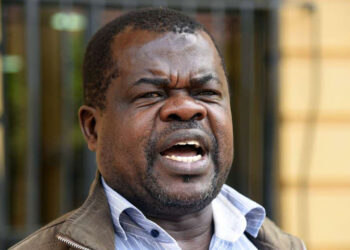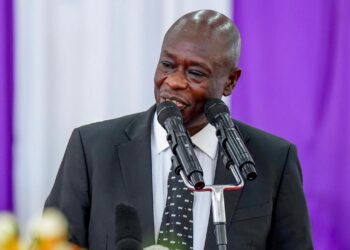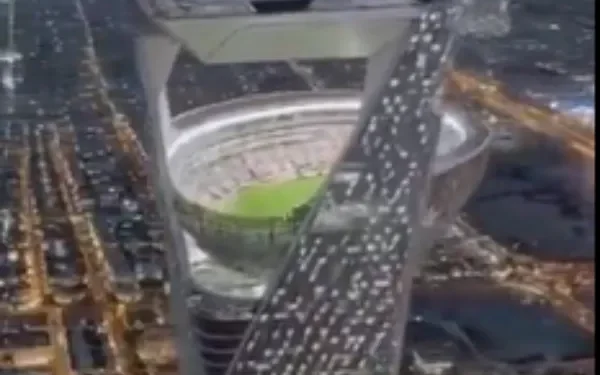The Saudi Sky Stadium, a gravity-defying arena suspended a jaw-dropping 1,150 feet above the desert sands, represents Saudi Arabia’s audacious bid to redefine football spectacles, poised to host electrifying matches for the 2034 FIFA World Cup.
Unveiled Monday by NEOM officials in a glossy virtual render that lit up Riyadh’s skyline screens, the 46,000-seat behemoth, perched atop the mirrored megacity of The Line, promises to blend Bedouin boldness with cutting-edge engineering, opening its ethereal gates around 2032.
“This isn’t just a stadium; it’s a statement, elevating sport to new heights, literally,” beamed NEOM CEO Nadhmi Al-Nasr during the reveal, his words echoing across a nation hungry to etch its name in soccer’s stars.
The concept, inspired by Saudi Vision 2030’s vision of futuristic oases, combines suspension cable technology with renewable energy sources such as solar panels and wind turbines to power the floating fortress, all while maintaining a zero carbon footprint.
At 350 metres up, it’ll dangle like a mirage over the Tabuk dunes, accessible via high-speed lifts that whisk fans from ground level in under two minutes, per design specs from architectural darlings Zaha Hadid Architects.
Imagine: halftime heroes sipping cardamom coffee with Mt Jabal Soudah peeking in the distance, or penalty shootouts under a canopy of stars unmarred by light pollution.
Construction kicks off in 2027, a $1 billion sprint to sync with FIFA’s green-lighted solo-hosting gig, where Saudi’s 15 proposed venues, from Jeddah’s seaside coliseum to Riyadh’s urban pulse, will stage the expanded 48-team extravaganza.
Sceptics, though, eye the blueprint with a squint. “Is it possible to engineer a stadium in the sky?” Bold, but one sandstorm or cable snap, and it’s Icarus 2.0,” quipped British architect Norman Foster in a wry BBC aside, nodding to the project’s perch on The Line, a 106-mile linear utopia still mired in funding fog since its 2017 splash.
NEOM boosters counter with data: advanced composites from Aramco labs promise quake-proof resilience, while AI-monitored cables adapt to thermal swells like a nomad’s tent.
For Saudi youth, particularly those under 30, who are passionate about football, the aerial pitch is highly anticipated; polls from Diriyah Gate indicate that 78% of them are excited about it, which is a significant departure from the oil derricks of the past.
This Saudi Sky Stadium isn’t isolated flair; it’s the crown jewel in a World Cup war chest that includes underwater training pods in the Red Sea and VR fan zones in AlUla’s canyons.
FIFA chief Gianni Infantino, fresh from a Riyadh powwow, gushed, “Saudi’s reimagining the beautiful game – sustainable, spectacular, singular.”
Critics abroad, from Amnesty’s human rights hawks to eco-warriors at Greenpeace, grumble about labour shadows and desert disruptions, but Riyadh retorts with union pledges and biodiversity offsets: 1 million trees to shade the sands below.
As October’s harvest moon rises over the Empty Quarter, the Sky Stadium blueprint stirs a global gasp. Will it soar as soccer’s Everest or stumble under its ambition?
For 2034’s billions tuning in, one thing’s sky-high certain: football’s frontier just got a lofty lift. Saudi’s not building a venue; they’re scripting a vertigo victory lap.



